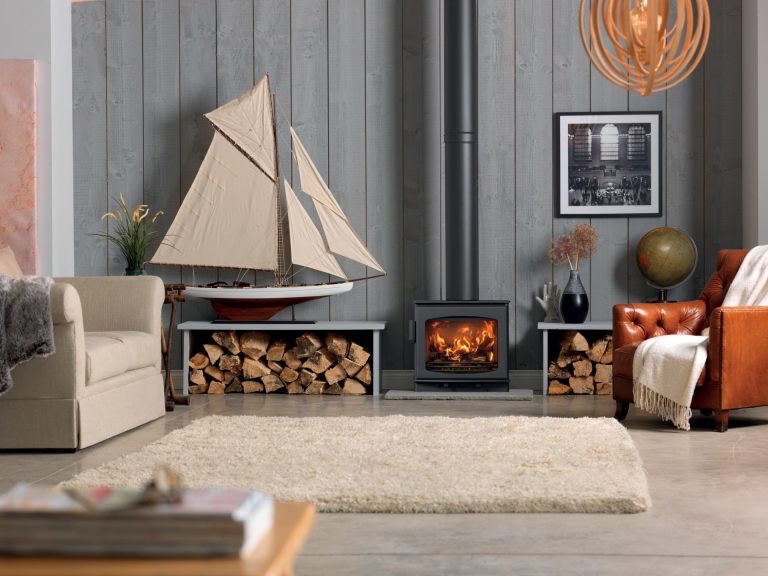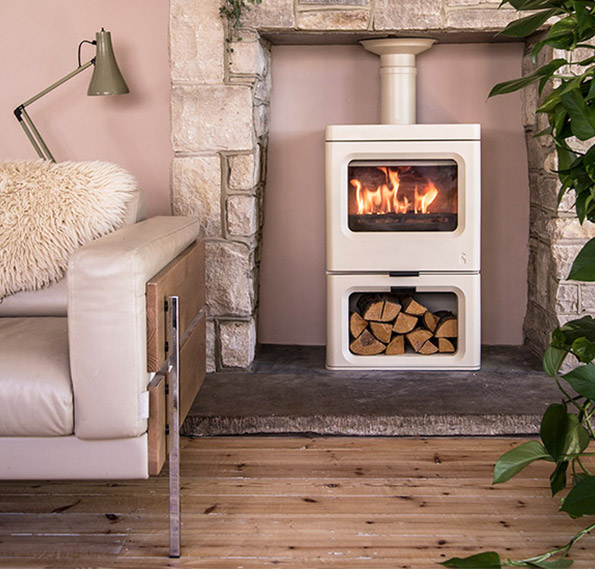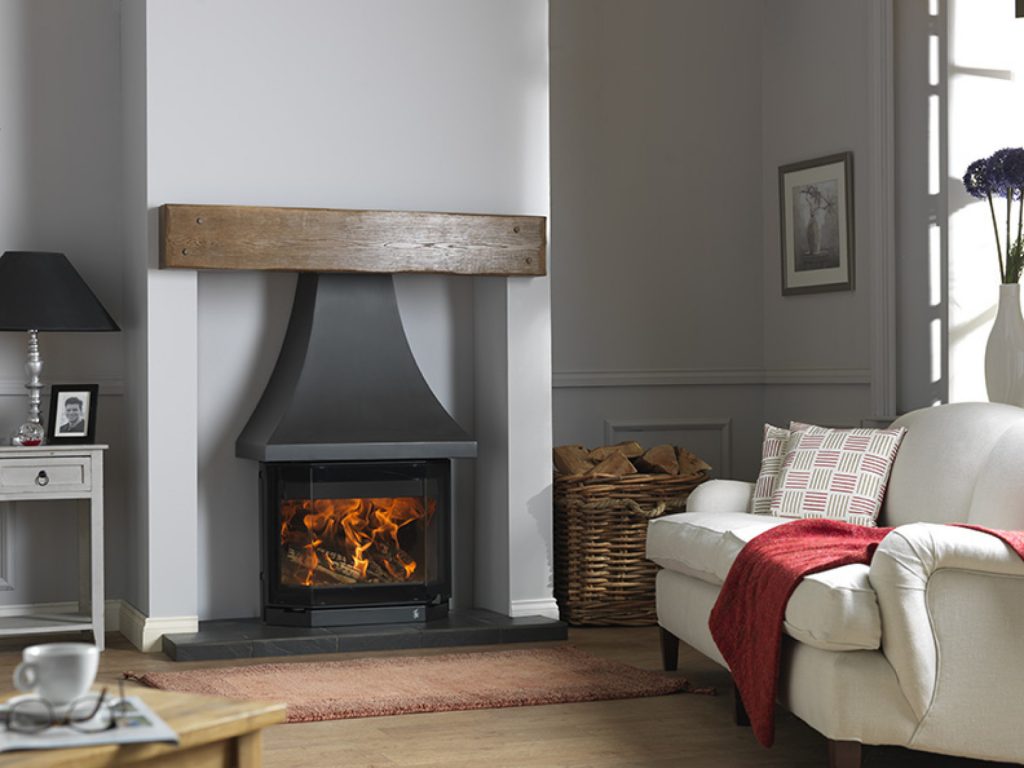Over the last couple of years we have seen politicians and environmental groups looking to tarnish the reputation of wood-burning stoves. Granted, any combustion process will release particles into the atmosphere, many of the real benefits of wood-burning stoves have been lost in recent press comment. So, we thought it might be useful to remind ourselves of the benefits of a wood-burning stove and exactly what they have to offer.
Deep seated heat
In reality, until you have experienced the deep seated heat created by a wood-burning stove, you have not lived! This is a heat which literally warms you to your bones and creates an atmosphere which is extremely relaxing. There is nothing better after a hard day at the office than coming back, kicking off your shoes and drifting off to sleep in this special kind of heat and atmosphere.
Fuel efficiency
Many of those looking to tarnish the name of wood-burning stoves tend to forget the efficiency of the combustion process compared to other types of heat. Would you be surprised to learn that a traditional open fireplace has an efficiency rating which rarely goes above 25%? Would you be surprised to learn that electricity, gas and oil have a lower efficiency rating than wood-burning stoves?
That is because the modern day wood-burning stove can be up to 80% efficient which means that 80% of fuel added to the stove is released in the form of heat. Compared to just 25% of fuel actually turned into heat by an open fireplace, this says everything.
Money saving potential
If you are buying a wood-burning stove simply to save money you will have to do your research beforehand. It will depend upon the type of wood available in your locality, the cost and how much you use your stove. However, don’t forget, there is also the potential to attach a boiler system to your wood-burning stove and wring every last ounce of efficiency out of the system.
In reality, the cost of electricity and gas is rising much quicker than the cost of wood, therefore wood-burning stoves are likely to become more cost efficient in comparison. It is also sensible to take into account the initial outlay on a stove and installation but many people still find it to be cost-effective compared to more traditional heating methods.
Reliability factor
The modern day wood-burning/multifuel stove is built to last with materials such as cast-iron, sheet iron and limestone commonly used today. As there is no power supply, and these machines are extremely durable, the reliability factor is effectively 100%. From time to time you maybe need to replace certain elements of your stove but you will likely notice a slight reduction in efficiency, prompting you to order replacement parts. In essence, you will not try and start your stove one morning only to find it has perished. So, whether living in the countryside, inner city or perhaps a small village, the reliability factor of the modern day wood-burning stove is something to consider.

Environmentally friendly
This is perhaps the most controversial subject with regards to wood-burning stoves but one which is often misinterpreted. You may see figure suggesting disappointing environmental impact figures but if you dig deeper these will relate to older stoves. Modern day wood-burning stoves, as we mentioned above, are 80% efficient compared to for example an open fireplace which has a maximum efficiency rating of 25%.
The modern day wood-burning stove, while maintaining its traditional look, could well have three different combustion processes. Initial burning of the fuel, the reigniting of the gases and the further reigniting of excess gas before the remnants is released. It is worth checking the environmentally friendly aspects of a stove you’re looking to buy as well as the efficiency of the fuel burning process.
Heat output
Modern stoves tend to revolve around sheet iron material which heats very quickly and cools very quickly, while others use cast-iron and limestone. All of these materials have their own benefits and advantages but many prefer cast-iron and limestone. These two materials are able to absorb the heat from the combustion process and radiate this into your room over a prolonged period of time. As a consequence, you will likely feel heat waves for a long time after the last of your stoves burning embers have burned out.
There is nothing wrong with sheet iron which has the benefit of heating much quicker than cast-iron and limestone but it does not have the same heat absorption characteristics.
A modern day centrepiece
If you look back to the style and design of stoves in years gone by and compare them to stoves today, you will see some major differences. Consumers today tend to place a significant emphasis on the design, look and characteristics of the stove as much as they do on its efficiency and heat output. Therefore, whether looking for a traditional or contemporary design, there are many stoves out there that will naturally become the centrepiece of your room. They will be a conversation starter, catch the eye of visitors while also being more than just decorative!

Summary
In the wave of negative press comment regarding wood-burning stoves it is sometimes easy to forget what they offer and how efficient they are compared to historic counterparts. As we mentioned above, any combustion process will result in the release of particles into the atmosphere but the three stage combustion systems of today will burn the wood, the excess gas and then re-burn the gas before the remains are released. If you are looking for advice and assistance then please feel free to give us a call.

